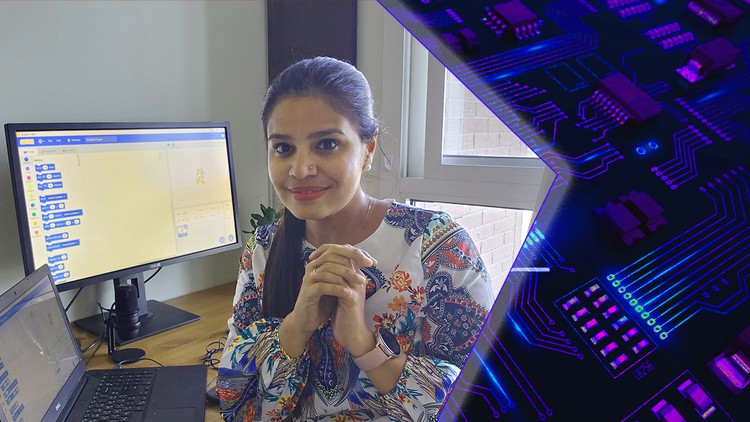
Arduino and Electronics
What you will learn
Basic Electronics
Electronics Components
Arduino Board
Arduino Programs
Description
In this course you will learn about
Basic Electronic Components
How they work?
Basics of Arduino and how to assemble circuits
In a nutshell, an Arduino is an open hardware development board that can be used by tinkerers, hobbyists, and makers to design and build devices that interact with the real world.
Is Arduino coding or programming?
Arduino IDE is a special software running on your system that allows you to write sketches (synonym for program in Arduino language) for different Arduino boards. The Arduino programming language is based on a very simple hardware programming language called processing, which is similar to the C language.
What language is Arduino?
The Arduino language is a subset of C/C++, where you can also use assembly for ultra-low level code. When saying “programming on Arduino”, in fact you don’t program the Arduino board itself, but the microcontroller inside the board.
How many types of Arduino do we have?
How many types of arduinos do we have? Explanation: There are 4 Arduino boards and 4 Arduino shields that fit on top of Arduino compatible boards to provide additional capability like connecting to the internet, motor controller, LCD screen controlling etc.
Can I use HTML in Arduino?
Send data to Arduino
You can use this array to store values for sketch functions. This button will send PWM value 123 to pin 5 and turn on connected LED. Similarly you can use HTML inputs (and forms) to work with hardware.
Is Arduino used in robotics?
With the Arduino Robot, you can learn about electronics, mechanics, and software. It is a tiny computer on wheels. It comes with a number of of project examples you can easily replicate, and it is a powerful robotics platform that you can hack to perform all sorts of tasks.
Content